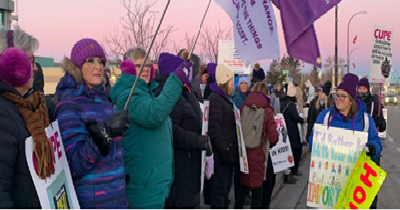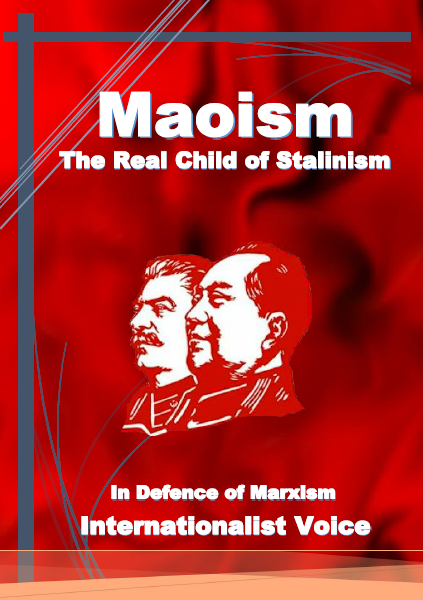Mass Protests, Labour Struggles and Class Horizons
The imperialist war in Ukraine has not only overshadowed the countries involved in the war. The entire capitalist world has also been affected by the new world conditions. The working class and lower strata of society who have not been directly slaughtered during the war have been made to pay in other ways. Inflation has lowered the standard of living of the working class, not only in peripheral countries but also in the capitalist metropolis. Inflation is devastating peripheral countries – taking food out of the mouths of workers who are already hungry, along with the lower strata of society.
In this context, in late May, a new wave of mass protests emerged, protesting against the high prices and rampant inflation, and this spread to most cities. In addition, the collapse of the Metropolitan Tower on 23 May in Abadan, which left 39 people dead and dozens missing, sparked angry protests. Rather than sending relief forces, the bourgeoisie’s initial response to the collapse of the Metropolitan Tower was to send in a counter-insurgency unit, which inflamed the protests still further.
Mass protests are a product of the crisis of capitalism and can be seen in other countries, whether in peripheral capitalism (such as that in Iran and Turkey) or metropolitan capitalism (as in France, which has led to “Yellow Vest” protests). But since metropolitan capitalism tries to transfer the burden of the capitalist crisis to peripheral capitalism as much as possible, the burden of the crisis in the peripheral countries of capitalism is more destructive than in metropolitan capitalism. Poverty, rampant inflation, generalized unemployment, astronomical embezzlement, environmental problems, air pollution and subsisting below the poverty line have created a living hell for the majority of society. In contrast, a small minority – self-serving parasites – are living privileged and aristocratic lives in the earthly paradise that they have created for themselves, built with the proceeds of their exploitation of the working class.
The Islamic bourgeoisie, now in crisis, cannot or will not meet the protesters’ demands. The criminal bourgeoisie, on the one hand, seeks repression and, on the other hand, seeks to control the protests and take full advantage of legal and governmental channels to prevent the protests from spreading to other areas. This can be seen clearly in connection with the protests following the collapse of the Metropolitan Tower.
Contrary to the demagoguery of the right and left tendencies of capitalism, barbaric lifestyles, inflation, embezzlement, economic corruption, air pollution, etc., are not a product of mismanagement of the peripheral bourgeoisie and, in this specific case, the infamous Islamic bourgeoisie; rather, they are products of the capitalist system. Therefore, holding the only responsible of the Islamic criminals and gangsters as the main cause of the misery of the working class and the lower strata of society is to protect capitalism from the anti-capitalist struggle by whatever means possible. Discharging the anger and rebellion of the protesting masses, in the anti-regime protests, who are justifiably up again arms about their inhumane living conditions and their misery. However, efforts to strengthen the anti-regime movement are paid for with the blood of the lower classes of society. The anti-regime movement may replace the Islamic bourgeoisie with a different bourgeoisie, but the pitiful conditions endured by the majority of society will continue. The barbarism of capitalism must end.
Mass protests are characterized by the participation of lower and middle classes of society, with their respective ideologies and class affiliations; from monarchists, ethnocentrists and other reactionary forces to people protesting against the brutality of capitalism (such as the French Yellow Vest movement). However, workers participate in such movements not as a social class but as individual workers.
In street protests, individual workers may be free from class, and in a revolt, they may not be able to express their class positions. But on the streets, they become the black army of other classes. Mass street riots are not a way out of the mire of capitalism. Mass protests can only serve the working-class struggle if the working class emerges as a social class, boosting solidarity through mass protests and taking the lead in such protests. When the working class does not lead mass protests in a decisive and unified manner, mass protests can become a springboard for the rise of rival bourgeois tendencies.
Along with the mass protests, workers’ protests and strikes also continue. Given the social conditions, it is difficult to provide accurate statistics on the number of protests and strikes. Nonetheless, last year was prodigious, with thousands of workers’ protests or strikes registered; in other words, several protests or strikes took place daily. Of particular importance were the protests and strikes by project workers in the oil and petrochemical industries last summer.
In recent years, aside from other sections of the working class, the industrial proletariat has also been involved in workers’ protests and strikes. The fundamental question that arises is why have the gains been so small after such widespread protests and labour strikes? The main weaknesses of the current strikes can be seen in the following factors:
- Although labour strikes have spread from north to south and from west to east, the strikes lack internal class solidarity. The disintegration of workers’ protests and strikes, combined with the lack of coordination between workers’ protests, is one of the main weaknesses of these strikes. Strikes occur separately and have no connection with other strikes. The working class therefore does not appear as a social class.
- Legalism, directing workers’ protests and strikes to legal and governmental channels, and the venting of workers’ class anger are some of the dangers that threaten strikes.
- Trade union and syndicalist illusions are a deadly poison – a poison injected into the political milieu by syndicalists, unionists and the left of capital. Paper support for workers’ strikes on the part of trade unions and labour unions in Western countries is not only an illusion created by them but is also a slap in the face for the working class. These same unions themselves play an important role in enforcing most anti-labour laws in Western countries, even blacklisting protesting workers. Paper solidarity prevents the working-class battalions of the world class from realizing their real, factual class solidarity.
Chained workers!
All eyes and all hopes are fixed on our class. If the working class does not present itself as a social class in these protests and does not take the lead; if the protests do not take an independent class path; and if the working class does not establish its strikes and struggles committees and other independent institutions, then our struggle will only serve the anti-regime movement. The protests will serve the horizon of anti-dictatorship. As in 1979, the Islamic bourgeoisie rode on the wave of protests, and as a result, the Islamic bourgeoisie replaced the royal bourgeoisie, however, our class continues to suffer from wage slavery.
We must rely on our class power and our class sisters and brothers in our protests. Only from our class terrain will we be able to repel the onslaught of the bourgeoisie. Coordinating labour protests and linking labour strikes, in addition to showing class solidarity, will empower workers and pave the way for evolution of the class struggle to a higher level. Workers’ protests, because of their anti-capitalist nature, can not only spread to other capitalist countries and provoke class solidarity among the workers there but also challenge the capitalist state and put the communist revolution on the agenda of the proletariat.
Long live the independent workers’ struggle!
M. Jahangiry
1 June 2022
DOWNLOAD AZ PDF















